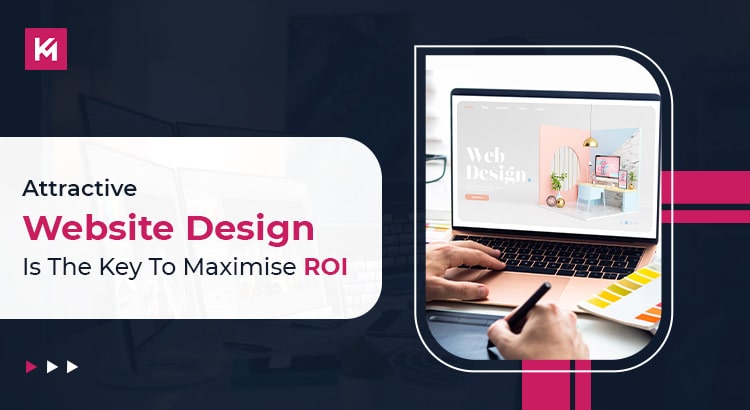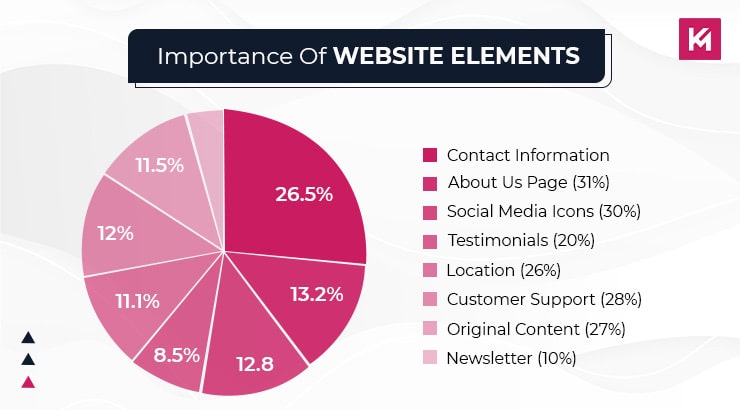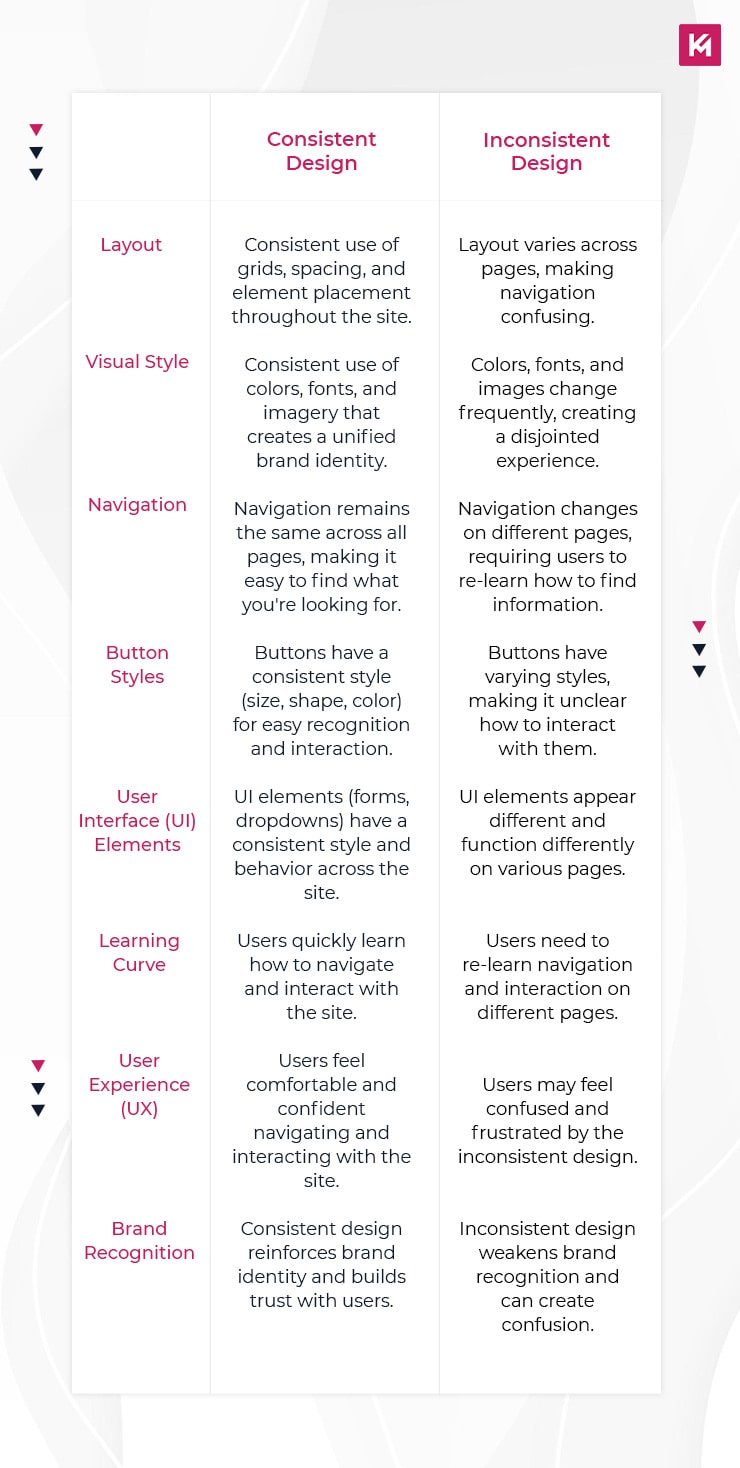In today’s world, websites are the first point of contact with potential clients. Yet, many websites fall short of providing their visitors with a smooth experience, which is a basic requirement. You should not hesitate to create a better experience for your visitors, as every $1 invested in UX results in a return of $100, according to Forrester. That’s a lot of ROI. But how can you invest in your website to create a smooth experience? Let’s find out in this article.
How does good web design affect user experience and business?
If you’ve ever wondered why website design is crucial for creating a good website, consider this: Your website is a valuable tool that promotes your business and informs people about it. The more visually organized it is, the easier it is for visitors to find information, ultimately leading to more entries into your lead funnel.
Using a website, you can establish your brand as a professional, credible, and trustworthy contender in the market. Many factors contribute to making a good website, including catchy design elements, colour schemes, and a smooth user experience, along with powerful performance.
Your website showcases your products/services, portfolio, social proof, and more. These are things a user searches for when they are about to make a decision regarding purchasing your product or hiring your services. When visitors easily find these elements, they are more inclined to trust you and complete a purchase.
Additionally, a well-designed website also impacts the effectiveness of your marketing. This is because no matter how you are driving leads through advertising, they are eventually going to end up on your landing page, which is part of your website. Advertising aims to drive traffic to your website; it’s then the responsibility of your website to convert them into customers.
It’s important to mention that a good website layout can also improve your ranking in search engines. Your search engine optimization greatly depends on how structured your website is.
What do customers want to find on your website?
Websites are powerful tools that businesses can use to reach a wider audience and connect with potential customers. They also offer a platform to showcase their brand and build trust with visitors. However, designing a website that can effectively achieve these goals remains subjective. According to a survey by HubSpot, customers seek the following on a website:
Contact Information
62% of people surveyed say it’s really important to have contact info on your website. This means your phone number, email, or other contact details should be easy to find for a visitor on your website. You can add an “Email us!” button and placing “Contact Us” forms throughout your site for easy access.
About Us Page
Having an “About Us” page is essential for your brand to share its story and values. As gaining trust from consumers is crucial with 85% stating they’ll only consider a brand they trust. Surprisingly, hubspot’s poll found that 31% rated an About Us page as the most important website element, even above live chat and product images/video.
Social Media Icons
Social media icons help people visit your social pages. About 30% of people look for them on your website. But don’t put too many icons on your site. Just focus on the platforms you use often.
Testimonials
Customer testimonials can make you seem more trustworthy. About 20% of people find the website reliable that show insightful testimonials. Show real endorsements from happy clients to make potential customers trust you more.
Location
Including geographic details improves local search SEO. 26% of respondents agreed that including location in page titles and metadata help them locating the business they are seeking services from.
Customer Support
28% of respondents emphasized the importance of live chats. Consider using chatbots to offer instant feedback and assistance to visitors.
Original Content
27% of participants prefer original videos and images of your products or services over stock photos. Use authentic visuals to showcase your work and build trust with potential customers.
Newsletter
According to 10% of respondents, having a newsletter sign-up button is valuable for staying connected with visitors. Offer subscription options to keep prospects informed and increase brand loyalty.
Finally, remember to use analytics to track your website’s performance and make informed design decisions over time. Continuously test and improve your web design to meet and exceed customer expectations.
What are the 3Cs of website design?
Designing a perfect website can be subjective, but there are principles you can follow to create a website that stands out. Here are some guiding principles to help you pave the way toward building a good website:
Consistency
Consistent website design means making sure your website looks and works the same on every page. This includes keeping things the same for:
Visual Elements
Stick to a defined colour palette. Ensure a consistent typography across headings and body text. Maintain a uniform style in images and graphics, and use similar layout structures throughout the website. Following these principles enables you to craft a unified and visually attractive website experience for your visitors.
Navigation
Make sure your website is easy to use by keeping the main menu in the same spot on every page and creating clear labels. Alongside, keep the menu behaviour consistent across all pages like maintaining uniformity when users hover over or click on it.
Interactive elements
Give a consistent colour/shape or active state throughout the website. Do not use different styling and layout patterns for all contact/input forms.
When you make all these aspects consistent it will make the website easier for the users to navigate and interact with. This can boost the conversion rate of a website. Neil Patel mentioned in one of his articles that people form their first impression of your website within milliseconds. If your design is inconsistent, then they’ll bounce quickly.
Content
Content informs design. The content you plan to include on your website determines its appearance. For example, if you have lots of words, you need space and clear writing. If you have lots of pictures, you might want them organized in a grid.
Design enhances content. Good design makes your content more interesting. Adding pictures, videos, and clear ways to move around the site helps people understand what you’re saying.
When you’re making your website, you need to think about both content and design from the start. This means figuring out what you want to say and how you want it to look.
Content drives user experience. What’s on your website is what people come for. How it looks and how easy it is to find things affects how much people like using it. If it’s well-designed and easy to understand, people will like it more.
According to Rand Fishkin, high-quality, informative content that aligns with search intent can attract qualified leads and ultimately drive sales. This focus on attracting the right audience with valuable content directly contributes to ROI growth.
Customization
Building a user-friendly website is like building a welcoming store. You want visitors to feel comfortable and find what they’re looking for easily. Here’s how:
Clear Navigation
Your website needs clear menus and well-organized content so visitors can find what they need quickly.
Mobile Friendly
With many people shopping on their phones, it’s essential that your website looks great and functions smoothly on all devices, particularly smartphones and tablets.
Fast Loading Speed
Nobody likes waiting. Optimize your website images and remove unnecessary clutter to ensure fast loading speeds and keep visitors from getting frustrated.
Clear Calls to Action
Give visitors a nudge in the right direction. Use clear calls to action (CTAs), like “Sign Up for Our Newsletter” or “Buy Now,” to guide them towards your desired outcome.
Accessibility for All
Your website should be accessible to everyone. Use proper headings, alt text for images, and readable fonts to ensure everyone can navigate your site.
Consistent Branding
Maintain consistent branding across your website so visitors recognize you and feel comfortable.
Quality Content
Engaging content is like having friendly and knowledgeable salespeople. Offer content that is valuable and relevant to your audience’s requirements to maintain their interest and encourage return visits.
Search Engine Optimization
Make your website search engine friendly to boost visibility and attract new visitors naturally through search queries.
Best Practices for designing a website?
Here are some actionable tips for converting website traffic into qualified leads:
- Understand Your Audience
Document user personas to understand your website’s audience better. Identify different classes of web users through qualitative methods like interviews and website data analysis.
- Align with Customer Journey
Make your website relevant to the customer journey by addressing their questions and concerns. Consider the prospect’s intent and unique journey to improve the overall user experience.
- Utilize Storytelling
Incorporate storytelling elements like colours, fonts, imagery, and video to engage users and convey your brand’s message effectively.
- Implement Lead Acquisition
Use effective marketing tools like landing pages, calls-to-action (CTAs), and forms to drive traffic and capture qualified leads.
- Optimize Site-wide CTAs
Ensure a visible call-to-action (CTA) in the header of every page to encourage user engagement and lead generation.
- Emphasize Products or Services
Highlight the value proposition of your products or services to address user queries and enhance conversions.
- Prioritize Speed and Security
Improve website speed and security to enhance user experience and protect customer data, leading to higher conversions and better search engine rankings.
- Communicate Value Proposition
Design your homepage to clearly communicate who you are, what you do, and how you differentiate yourself from competitors.
- Ensure Mobile-Friendliness
Adapt your website for mobile users to accommodate those browsing on mobile devices, broadening your audience reach.
- Implement Tracking and Analysis
Integrate tracking codes such as Google Analytics to oversee website traffic, user interactions, and conversions. Continuously analyze data to identify areas for improvement and optimize website performance.
In conclusion
Investing in attractive website design is crucial for maximizing ROI. A thoughtfully crafted website acts as the main connection point with potential clients, providing them with a smooth and captivating interaction.. By prioritizing user experience and implementing effective design strategies, businesses can convert website traffic into qualified leads, ultimately driving success and profitability.



